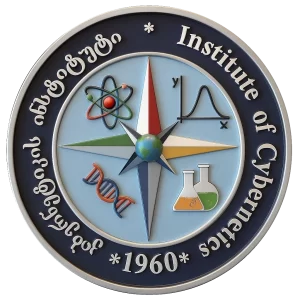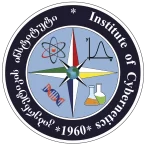
Vladimer Chavchanidze Institute of Cybernetics of the Georgian Technical University
The Academy of Sciences of the SSR of Georgia’s Presidium determined, in accordance with Resolution #690 of the Council of Ministers of the USSR of Georgia, dated October 3, 1960, that, “The Institute of Cybernetics of the Academy of Sciences of Georgia shall be established on the foundation of the Physics-Cybernetics Department of the Physics Institute”. In the former Soviet Union, it was the first Institute of Cybernetics. The initiator and founder of the institute was an outstanding Georgian scientist, full member of the National Academy of Sciences of Georgia, Academician Vladimer Chavchanidze.
Subsequently, on the basis of the Decree of the Government of Georgia No. 58 dated March 16, 2006, the Institute was transformed into a legal entity of public law. The Institute was named for its founder, Academician Vladimer Chavchanidze, in accordance with Georgian Government Decree No. 61 dated March 2, 2010. The Institute was reorganized as a structural unit of the Technical University of Georgia — an independent scientific-research institute —in accordance with Resolution #185 of the Government of Georgia dated July 9, 2010.
The following tasks were assigned to the institute when it was established:
– Research into new principles for developing cybernetic system elements and processing highly effective elements based on them;
– Modeling of natural and artificial processes, structures, and systems, as well as the development of new physical, cybernetic, and bionic principles for the development of highly efficient cybernetic systems.
The Institute of Cybernetics was known for its strong sense of individuality in accordance with its interdisciplinary nature, from the very beginning of its existence. A diverse group of scientists and technologists, including mathematicians, physicists, biologists, chemists, doctors, and others, came together and were united within the institute’s walls throughout its development. These specialists made a significant contribution to the establishment of the institute as a powerful scientific center. Within a few years of its founding, the institute employed over 1,300 people and 11 scientific departments with 38 laboratories functioning in the institute.
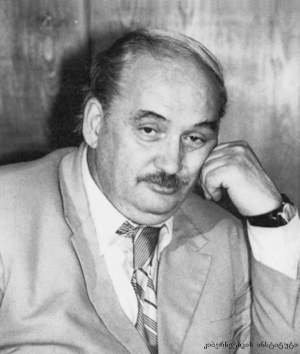
Academician Vladimer Chavchanidze
The quantum-wave theory of neural networks and coherent quantum-wave model of the brain were created by academician Vladimer Chavchanidze in collaboration with his students. Institute developed the “Photo Saurus” photometer and polarizing light filters, both of which were utilized 10 times in spaceships.
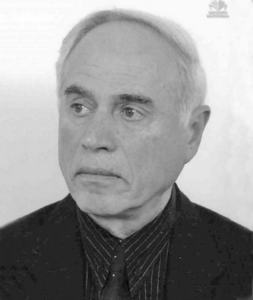
Academician Guram Kharatishvili
Academician Guram Kharatishvili, full member of the National Academy of Sciences of Georgia and vice-president of the Academy of Sciences of Georgia, served as the Institute of Cybernetics’ director for 20 years. His works dealt with the problems of control of dynamic systems given by differential equations with delayed arguments, thus laying the foundation for the mathematical theory of optimal control of such systems. It is important to mention that G. Kharatishvili made a significant contribution to the education of young scientists; among his countless students are many candidates of sciences and doctors, whose researches are recognized and widely known throughout the world.

Doctor of Medicine, Professor Mikheil Akhalaya
Professor Mikheil Akhalaya, a well-known doctor and the head of the institute’s medical cybernetics department, was the former USSR’s Stalin Prize winner. During the last two decades of his life, M. Akhalaya actively advanced the problems of acquiring, studying, and employing new kinds of materials — magnetic fluids in biology and medicine. His study in this subject was of a pioneering nature, which is why he was elected as the chairman of the Coordinating Council for the Study of Magnetic Fluid Problems, which was formed with the connection of Physics of Magnetic Phenomena Section of the Academy of Sciences of the former Soviet Union.
Professor Khanzerifa Gaphrindashvili was awarded The State Prize of Ukraine. His fame was due to his work in the field of fiber optics. The optical fiber cable created by him and his coworkers was used for the first time during heart operations in Georgia.

Academician Kokhta Japharidze
Academician Kokhta Japaridze, the very remarkable Georgian chemist and a full member of the National Academy of Sciences of Georgia, was awarded the State Prize of Georgia along with several of the institute’s employees, as well as individually received the Petre Melikishvili Prize. K. Japaridze and his students have produced important works in the areas of chemical reaction modeling and optimal control of chemical reactions.

Doctor of Phys.-Math. Sciences Shermazan Kakichashvili
The novel technologies created by internationally renowned professor Shermazan Kakichashvili and his students are primarily based on the newest branch of coherent optics known as polarization holography. He was the founder of this direction, which is confirmed by the recorded scientific discovery “The phenomenon of reproduction of the wave picture of the electromagnetic field” (Diploma of Discoveries of the USSR No. 214, 1979). This was Transcaucasia’s first officially recognized scientific finding.

Doctor of Phys.-Math. Sciences Givi Tsintsadze
Professor Givi Tsintsadze, a well-known physicist, is rightfully regarded as one of the founder of the Ukrainian Academy of Sciences’ Donetsk Physico-Technical Institute. In this place he was the director of the “Department of Solid State High Pressure Radio Spectroscopy” while simultaneously serving as the Deputy Director of the Institute. After returning to his homeland, from 1978 until his death, he leads the Scientific Laboratory of Coherent Optics and Electronics of the Institute of Cybernetics. Givi Tsintsadze was named head of one of the directions of the state program of high-temperature superconductivity research of the Council of Ministers of the former Soviet Union in 1989 due to the fact that it was under his guidance that one of the best samples of superconducting ceramics were prepared for the first time in the Soviet Union. The optical spectroscopy of biological tissues, which remains as one of his laboratory’s top research priorities, was laid out in the final years of Givi Tsintsadze’s career.

Doctor of Phys.-Math. Sciences Guram Сhilaya
A team of young scientists under the direction of Professor Guram Chilaya, the founder of the Georgian School of Liquid Crystal Physics and a well-known figure in international scientific circles, started studying the physical characteristics of liquid crystals with the goal of using them in information technology. G. Chilaya worked as an invited scientist in numerous renowned international scientific institutions in the USA, France, Italy, Germany, and Japan. G. Chilaya received the V.K. Fredericks International Medal in 2006 for his contributions to the science of liquid crystals.
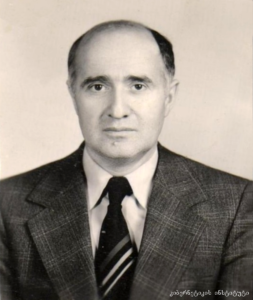
Doctor of Phys.-Math. Sciences, Professor Jumber Sanikidze
A significant body of work on the subject of wave processes in quantum fluids has been written or been co-authored by Professor Jumber Sanikidze. Among his scientific studies, the only generalizing monograph in the literature that he co-authored with scientists from Kharkiv on the physical characteristics of He3-He4 quantum solutions is of particular note.
It is also important to mention Givi Bagratishvili, a doctor of chemical sciences, who made a significant contribution to the Institute’s increased scientific capacity. His department’s research interests included the production and research of microelectronic components of computer technology, invention of metal-dielectric-semiconductor type transistors, and the development of novel techniques for the deposition of dielectric films. The department of Computing Engineering Elements and Nanomaterials was afterwards developed from the aforementioned department.

Doctor of Phys.-Math. Sciences Zurab Phiranashvili
Phys- Math. Doctor of Sciences Zurab Piranashvili, a prominent Georgian mathematician, is the author of significant works on stochastic process modeling and forecasting, where one of the most significant of his works is about stochastic process interpolation. The proof of the success of his in this field is the fact that the terms Piranashvili-Lee’s theory and Piranashvili’s alpha Process are utilized in the worldwide scientific literature.
Many other distinguished scientists and doctors of sciences worked at the institute, including Anatoli Giorgadze, Avtandil Kvitashvili, Mark Perelman, Giorgi Chanturia, Rostom Djibladze, Guram Sikharulidze, Merab Djibladze, and others.
Currently, the Institute of Cybernetics has 167 employees and 11 scientific subunits. These units are:
Department of Mathematical Cybernetics
(Head — Doctor of Phys.-Math. Sciences Grigor Giorgadze)
Research areas include: 1) Analysis and complexity theory of quantum computing; 2) Algebraic analysis of fuzzy logic to resolve unification issues, which is crucial for computer science tasks involving automatic theorem proving.
- Department of Stochastic Analysis and Mathematical Modeling (Head — Doctor of Phys.-Math. Sciences Revaz Tevzadze)
The department is working on numerous projects on stochastic process theory and its use. Constructive methods for stochastic process interpolation, modeling, and forecasting were developed. Generalized formulas of the Whittaker-Kotelnikov-Shannon type are obtained, which are crucial to the theory of signal transmission. For the semimartingale financial market, a system of stochastic differential equations relating to the hedging problem and the investment problem in the mean square sense is obtained, and the issue of the system’s solvability and unity is explored. The statistical properties of electromagnetic wave propagation in a random environment are investigated as well. Research is being done in the areas of fuzzy logic and fuzzy set theory.
- Department of Applied Pattern Recognition Systems (Head is a candidate of technical sciences Goderdzi Lezhava);
As a part of international funding ISTC and USTC, the department developed a highly efficient robotic system for selective tea harvesting. Hardware realization for its functioning model is currently in progress. A hybrid intelligent system is currently being developed by one group in the department to solve real-time, computationally intelligent procedures. The department also works on a development of the non-parametric technique for segmenting digital images that, when used on various digital image formats, produces good results in terms of closeness between the original image and the segmented images.
- Department of Biocybernetic Systems (Head — the Doctor of Biol. Sciences Besarion Partsvania);
The department has conducted and is still conducting research on the following topics as part of national and international grants: a) the processing and storing of information by a single neuron under the influence of external electromagnetic fields; b) the detection of cancerous tissues using infrared radiation (studies are carried out in collaboration with medical personnel); c) computer modeling of a bio-mimetic analogue based on the experimental study of the processing of echo signals in dolphin sonar (experimental research has been done in the early period).
- Department of Computing Engineering Elements and Nanomaterials (Head —-Math. Doctor of Sciences David Jishiashvili);
The goal of the department’s ongoing research is to develop new semiconductor compound nanowires that will act as catalysts for the photo-electrochemical decomposition of water and enable us to produce hydrogen directly from solar radiation. Hypersensitive gas sensors with functional analogs are made using the department’s semiconductor nanowires. The work is being done within the framework of the international funding as well.
- Nanocomposite Laboratory (Head — Candidate of Phys.-Math. Sciences Shalva Kekutia);
The study of nanoparticles, organic-inorganic materials, and inorganic nanocomposite materials is referred to laboratory activity. New generation functional and structural materials (such as graphene oxide, consolidated systems, and magnetic nanoparticles for biomedical applications) are produced on the basis of these structures. The laboratory’s work was and continues to be done within the framework of numerous grants.
- Department of Optics and Spectroscopy (Head — Candidate of Phys.-Math. Sciences Zaza Melikishvili);
The department is working on laser-induced fluorescence spectroscopy, an innovative method of identifying pathologies of biological tissues, including newly formed ones. A laser canceroscope was developed as a result of the research. The proposed device and technology, which are based on the analysis of fluorescence spectra caused by nanosecond laser pulses in biotissues, provide a powerful means of detecting their various pathologies. In the scientific group of the department, both fundamental and applied studies of light-controlled aggregations are carried out using the methods of optical anisotropy induction and polarization spectroscopy.
- Laboratory of Energy Efficient Technologies – Head-candidate of Phys.-Math. Sciences Nikoloz Margiani
In the Lab of Energy Efficient Technologies, it is aimed to develop an advanced energy materials with enhanced functionalities. The current research topics in the Lab include the measurements/analysis/optimization of functional characteristics of oxide thermoelectric materials and high-temperature superconductors, embedded with various dopants/additives in order to improve the performance of these materials for large-scale applications. Numerous national and international grants have been awarded to the laboratory.
- Laboratory of polarization-holographic studies (Head — candidate of Phys.-Math. Sciences Barbara Kilosanidze);
It has become possible to undertake a thorough investigation of the polarization state of light in real time due to a polarization-holographic diffraction element that has been developed in the laboratory. For use in astronomy, a portable, real-time, relatively cheap Stokes spectropolarimeter has been created that is based on a polarization-holographic diffraction element. An innovative real-time polarimetric method for quantifying the distribution of mechanical stresses in various structures and details has been developed. A new type of polarization-holographic system has been developed for high-level protection of important documents, securities, and industrial products from counterfeiting. Work is still being done in each of the aforementioned directions. The laboratory is distinguished by the number of grants obtained.
- Department of Optically Controlled Anisotropic Systems (Head — candidate of Phys.-Math. Sciences Andro Chanishvili).
The area of study includes the following: a) cholesteric liquid crystal structures, compositions of metal nanoparticles and organic dyes incorporated in a polymer as substances with improved characteristics for recording optical information; b) liquid crystal bubble structures as fundamental components for developing new types of electro-optical devices; and c) obtaining fiber components and conducting research. A multi-component neodymium glass-based fiber laser has been produced and studied. Through the use of external piezo modulation, electrical impulses regulate its temporal properties. A fiber laser of this type can be used in informational optical and fiber-optic systems, as well as as a components of telemetry antennas.
- Laboratory of Thermo and Photochromic Structures (Head — candidate of Phys.-Math. Sciences Gia Petriashvili);
In the laboratory, a lot of applied work is performed. In particular: a) The new environmentally friendly smart windows with temperature control; b) New reflective display types; c) High-optical resolution photosensitive liquid crystal polymer films that used for multiple encrypted data recordings, anti-falsification, and dosimetry of damaging UV light; d) Multi-line tunable cholesteric liquid crystal laser for real-time air pollution monitoring; e) A generator based on the effect of photo-catalysis for sterilization of closed spaces, neutralization of harmful pathogens, biochemical pollutants, and tumor excrescences. The work is still being done successfully.
Among the employees of the institute, 9 scientists hold doctoral degrees, 46 are candidates of sciences and 15 are academic doctors. At the institute, there are 36 female scientists.
